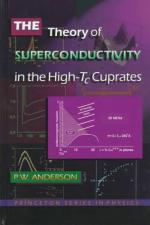|
This section contains 978 words (approx. 4 pages at 300 words per page) |

|
A superconductor is a material that loses all resistance (called "zero resistance") to the flow of direct electrical current and nearly all resistance to the flow of alternating current when three conditions are met: (1) the material is cooled below a characteristic temperature, known as its critical temperature; (2) a current passing through a given cross-section of the material must be at, or below, its (characteristic) critical current density; and (3) the magnetic field to which the material is exposed must be below its (characteristic) critical magnetic field. Superconductivity of a material is activated only when those three critical conditions are met, which vary with the material used. Some examples of materials that are capable of exhibiting superconductivity are mercury, zinc, magnesium, lead, aluminum, iridium, tin, vanadium, and many alloys.
The research and development of superconductors (sometimes called cryogenic conductors) is called superconductor technology. Superconducting materials include both high-temperature...
|
This section contains 978 words (approx. 4 pages at 300 words per page) |

|


